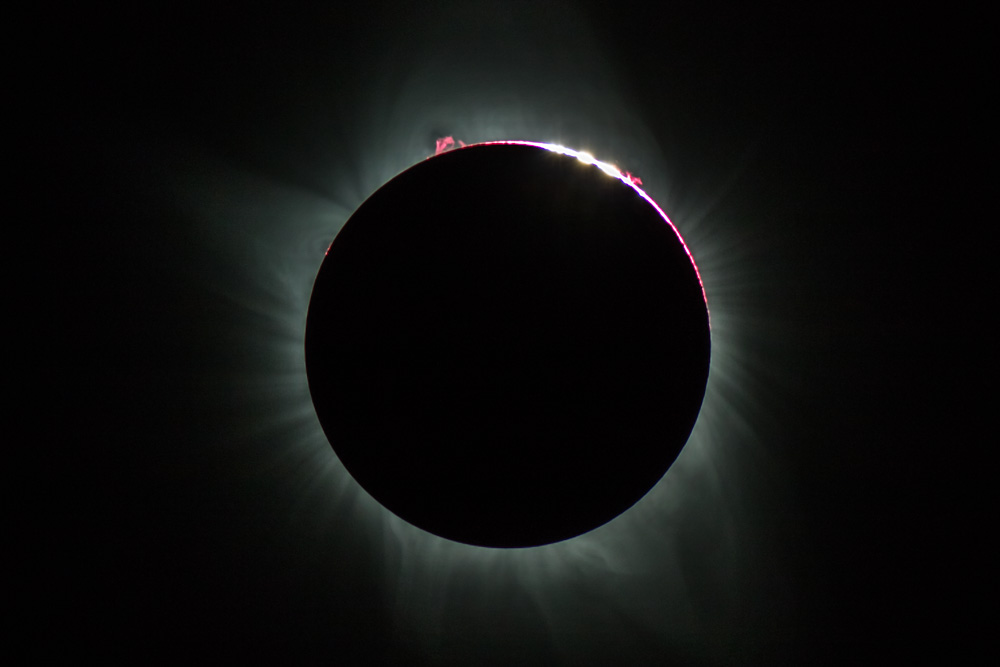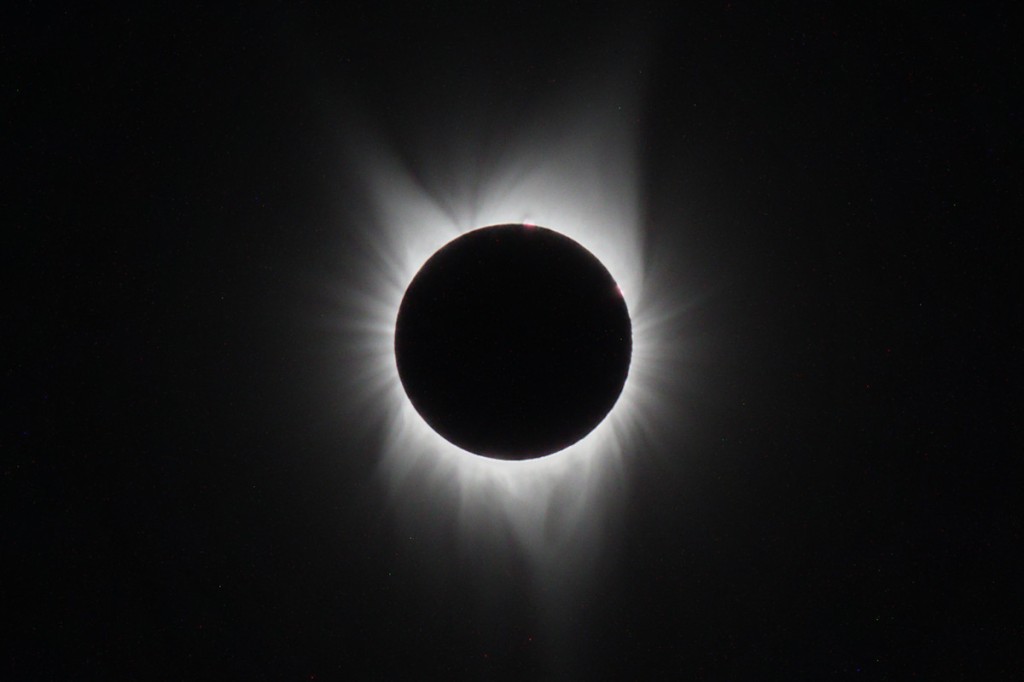
Did you know that a total solar eclipse is coming up on April 8, 2024?
This one is primarily visible from North America; you can find more information about where to see it (and if it’ll be visible from your location) over here on TimeAndDate.com.
I was planning to travel to “totality” myself, but those plans fell through because I couldn’t get the time off work. Nevertheless, I’ll be helping out at a viewing event up north of Joshua Tree National Park!
In this post, I’ll take you through what you’ll see during a total solar eclipse–and, at each phase, I’ll let you know exactly how to safely view the sun!
(Later this week, we’ll be back to our regularly scheduled programming on active galaxies.)
Important: Always use solar glasses and solar filters that conform to the safety standard ISO 12312-2. Be careful! There are bad actors on the market that print this standard on unsafe equipment. Use this list of trustworthy suppliers from the American Astronomical Society.
Eclipse Begins: First Contact

When the moon’s shadow first touches the sun’s disk, we call it first contact. If you’re viewing the eclipse with the guidance of experienced astronomers, you’re likely to hear excited announcements that “We have first contact!”
All safety equipment is required for direct solar viewing.
You can also view the eclipse indirectly. Solar viewers such as Sunspotters use lenses and mirrors to project an image of the sun onto a white surface such as a piece of paper. You can view the sun this way without solar glasses.

Important: Even if you are using an indirect solar viewer, it becomes more natural for your eye to focus on the sun when the detail of the moon’s edge passes in front of it. Be careful not to look directly at the sun without protection!
Partial Phase

Next, the moon’s silhouette will crawl across the sun’s disk. The time this takes depends on where you are in the “path of totality.”
As the partial phase progresses, be sure to look at the world around you, too. If you look for it, you can see the moon’s shadow rushing toward you across the Earth’s landscape.
All safety equipment is required for direct solar viewing.
Again, you can use an indirect viewer such as a Sunspotter, but remember not to look directly at the sun.
Diamond Ring Effect

This is where the fun really begins. The diamond ring effect is the last bright flash of sunlight before totality.
The diamond ring effect is still plenty bright enough to damage your eyes. But due to the detail visible in the moon’s terrain, it’s easier than ever for your eyes to accidentally focus on the sun.
Do not look directly at the sun! All protection is still required at this point.
Bailey’s Beads

This phase occurs when the moon has almost completely covered the sun’s disk. The “beads” are beams of light from the sun that manage to peek in between mountains and valleys in the moon’s terrain.
Like the diamond ring effect, this effect is still plenty bright enough to damage your eyes.
Do not look directly at the sun! All protection is still required at this point.
Totality

“Totality” is the total phase of the eclipse. At this point, the sun’s disk is completely covered by the moon. The remaining light is from the solar corona, which is not bright enough to damage your eyes.
Now you can take your solar glasses and filters off!
In fact, if you don’t take off your protective equipment, you’ll miss the whole thing. Protective glasses and filters are designed to block out 99.9% of the sun’s light. But during totality, the moon does that job for you.
And you do not want to miss the totality experience. It’s far more than just an astronomical phenomenon. There will be dramatic changes in lighting, and night will seem to fall during the day. (This is often very confusing for animals, who go a bit crazy for a few minutes!)
Totality Ends

Important: Put your solar protection back on!
Right as totality ends, the sun will peek out from behind the moon, and that sliver of emerging light is enough to damage your eyes.
But the show’s not over. We’re in for an encore of the phases leading up to totality, but in reverse.
First, Bailey’s Beads will shine through lunar valleys, but on the opposite side from where they appeared before totality. Then, as the moon’s silhouette slips back across the sun’s disk, the diamond ring effect will make a comeback, and then the partial phase will return.
I’ll leave you with this, because it bears repeating: Never look directly at the sun without protection, and make certain it conforms to safety standards. Again, use this list of trustworthy suppliers from the AAS.
I hope you enjoy the eclipse!
I’ve only been privileged to see one total eclipse in my time and it’s a weird thing. But that bright any shiny thing will burn out your retina if you’re not careful.
LikeLiked by 1 person
Ha, yup it will. I’ve never seen one, but I’m aiming for Australia in 2028. I wanna get one in before I start working in my field – I imagine all my colleagues will want the time off too, but they’ll have tenure and I won’t yet!
LikeLiked by 1 person
I hope you manage to see it, it is pretty amazing 🙂
LikeLiked by 1 person
Well, I will one of these days, no matter what. I’ll make it happen.
LikeLiked by 1 person
I know you will 🙂🙌
LikeLiked by 1 person